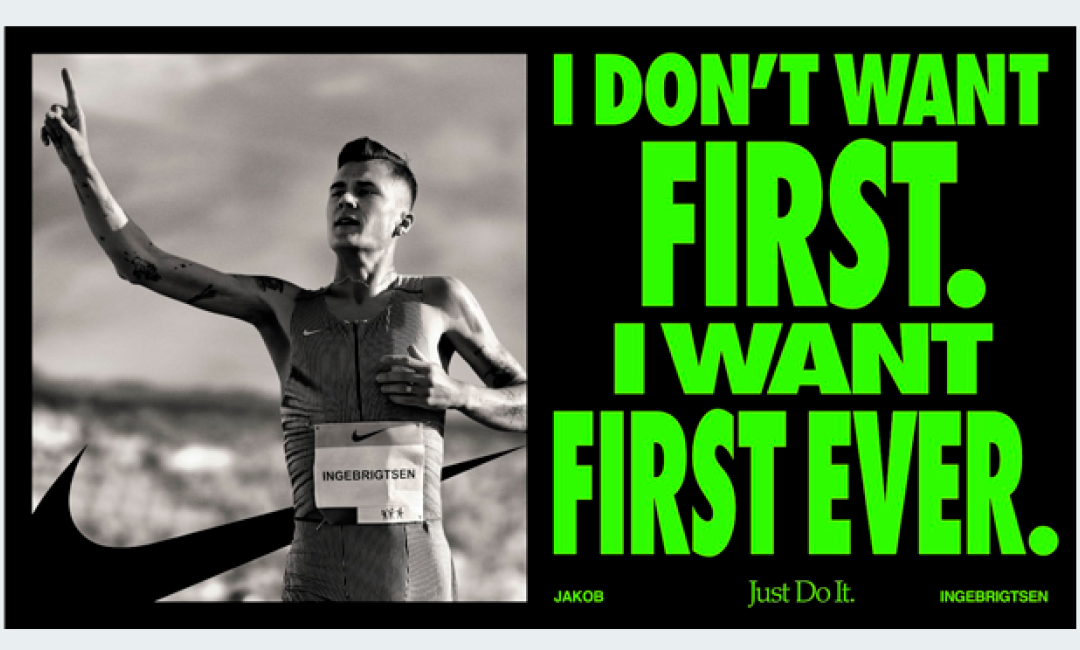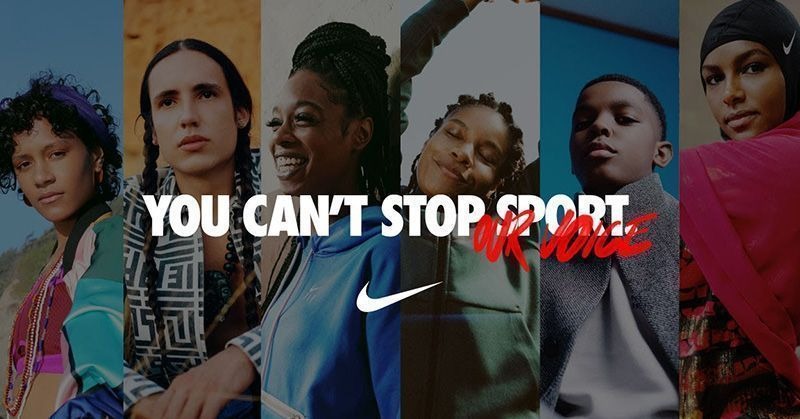Digital marketing for sports: uncovering the mysteries of sports marketing, what it is, strategies, and examples

Over the last decade, the sports industry has gone from measuring its performance in promotions or advertising using attendance at sporting events as a benchmark to measuring KPIs based on streaming views, social media interaction, sales of sports products in retail channels, and producing content on social media to support an entire industry worth billions.
All this change has sparked enormous interest in discovering how this new digital marketing for sports works.
This is precisely what we would like to talk about today: sports marketing. We will review key concepts, strategies, and examples of sports marketing that will give you a complete picture of this market and its strategies.
What is sports marketing?

Sports marketing is the set of strategies and techniques designed to promote, position, and monetize everything related to the world of sports. It is not just about selling sports products, but about creating deep emotional connections and managing value between audiences and sports, whether through athletes, teams, events, or brands.
The fundamental difference between traditional and digital sports marketing lies in reach, personalization, and measurement of results.
While traditional marketing relied on mass media such as television, radio, and print media, with single messages for large audiences, digital marketing allows for the segmentation of specific audiences, the creation of personalized content, and the measurement of the impact of each action in real time.
Why is it so important for brands and athletes?
The answer is simple: sports generate intense emotions.
When a brand manages to associate itself correctly with these feelings, it gains an extraordinary competitive advantage that inspires customers to return and compete, even when choosing between sports products or services.
Athletes, for their part, can build commercial empires around their personal image, transcending the limits of their sport.
At Magnetic, we understand that digital sports marketing is not just a trend, but a strategic necessity that can completely transform the fate of any sports-related project.
Types of digital marketing for sports

Sports digital marketing encompasses multiple areas, each with its own characteristics and specific objectives. Understanding these different types will allow you to identify which one best suits your needs and develop more effective strategies:
1. Marketing for sporting events
Marketing campaigns for sporting events are one of the most visible aspects of this discipline, which not only seeks to sell tickets, but also to create anticipation, excitement, and a sense of belonging.
Here, we focus on selling “experiences” above all else and compete to have a profound and intense impact on viewers.
Before the event, strategies focus on generating buzz through exclusive content, previews, athlete training sessions, and behind-the-scenes stories. During the event, real-time content, interactive broadcasts, and audience participation keep engagement high. After the event, nostalgic content and highlights extend the life of the experience.
The Olympic Games perfectly exemplify this strategy.
Months before the event, social media is filled with inspiring stories of athletes, tours of venues, and content that emotionally connects with millions of people. Soccer World Cups, international marathons, and tennis championships implement similar strategies, tailored to their specific audiences.
2. Digital marketing for sports products
Sports brands have been pioneers in digital marketing, setting standards that other industries have subsequently adopted: Nike, Adidas, Puma, and other iconic brands have understood that selling sports products means selling lifestyles, aspirations, and identities.
The role of influencers in this sector is fundamental. For example, a professional athlete trying out a pair of sneakers on YouTube can generate more sales than a traditional million-dollar advertising campaign.
TikTok and Instagram have become the main showcases where sports products come to life through authentic reviews, tutorials, and demonstrations in action.
3. Marketing for sports organizations
Sports clubs, leagues, and federations have developed sophisticated digital strategies to maintain and expand their fan bases through digital marketing, where winning games is no longer enough; it is necessary to create constant narratives that keep fans engaged throughout the year.
The forms this discipline takes are varied: official club apps offer exclusive content, detailed statistics, and gamified experiences that transform passive viewers into active participants.
Digital membership programs offer tangible benefits ranging from discounts on merchandise to preferential access to events.
4. Digital marketing for athletes
Finally, we have personal branding for athletes, which has reached levels of sophistication comparable to the strategies of major corporations.
Modern athletes understand that their sporting career is only part of their commercial potential; the real wealth lies in the personal brand they build around their image.
In this context, social media serves as the most powerful direct communication channel between athletes and fans. For example, an athlete can share their training routine, their thoughts before an important competition, or their daily activities, creating an intimate connection with millions of followers.
Personal storytelling is also fundamental to this process.
The most commercially successful athletes have transcended their sporting achievements to become symbols of perseverance, overcoming adversity, and excellence. Their personal stories, struggles, triumphs, and failures become inspirational content that resonates with mass audiences.
Digital marketing applications for sports
Digital marketing has revolutionized the world of sports, offering multiple applications ranging from brand strengthening to the creation of new sources of income. Understanding these possibilities allows us to identify business opportunities and design more effective strategies.
One of the main applications is sports branding, which is no longer limited to logos and colors. Today, a sports brand needs a clear digital personality, an authentic voice on social media, and the ability to connect emotionally with its audience.
Merchandising sales have also been transformed. Thanks to content marketing, products are shown in real contexts; influencers validate them through their daily use; and targeted campaigns reach the most interested audiences directly, making merchandising a profitable and consistent business.
When it comes to attracting sponsors, digital marketing allows for the presentation of accurate metrics on reach and engagement. This provides greater transparency and opens up access to brands and support even for small athletes or entities.
Another key application is community building. Digital platforms allow fans to interact, share experiences, and connect emotionally with their favorite teams or athletes. These communities strengthen the bond with the brand and become environments where new business opportunities arise.
Finally, content monetization offers athletes and organizations new avenues of revenue: from sponsored videos to online training or exclusive subscription content. The possibilities are vast and constantly growing.
Trends in digital sports marketing [2025-2026]
![Tendencias en marketing digital deportivo [2025-2026]](https://www.magnetic.cat/wp-content/uploads/2025/08/jesus-loves-austin-0O0gux4OZX4-unsplash-1024x683.jpg)
The future of digital sports marketing is being shaped by emerging technologies and changes in consumer behavior that promise to completely revolutionize the industry.
Artificial intelligence in audience analysis is enabling an unprecedented level of personalization, where algorithms can predict which content will resonate best with each audience segment, automatically optimize advertising campaigns, and identify engagement opportunities in real time.
This technology is democratizing sophisticated marketing strategies, making them accessible to athletes and organizations of all sizes.
On the other hand, augmented reality in sporting events is creating immersive experiences that transcend physical limitations, where viewers can access real-time statistics superimposed on the action, watch replays from multiple angles, and participate in interactive experiences that significantly enrich their connection to the event.
Interactive streaming has also been capturing scenarios and will continue to do so in the coming years, as it allows viewers to influence the cameras they want to watch, access specialized commentary on demand, and participate in real-time discussions with other fans around the world.
NFTs and digital collectibles have introduced new forms of ownership and exclusivity to the sports world, so it would not be surprising to see them used as sports marketing items.
Common digital marketing strategies for sports
Developing consistent and measurable sports digital marketing strategies is crucial, as the industry is highly competitive and audiences are extremely demanding.
Here are some of the most effective strategies:
- Content Marketing
- Build authentic, emotionally resonant narratives that connect with audiences’ deepest passions.
- The most effective content includes behind-the-scenes documentaries, training tutorials, tactical analysis, exclusive interviews, and user-generated content.
- Balance promotional content with genuine value that followers want to consume and share.
- Use of Social Media
- Each platform has its own essence: Instagram for impactful visuals, TikTok for viral creativity, Twitter (X) for real-time conversation, YouTube for long educational content, and LinkedIn for professional networking.
- The strategy must adapt to each platform’s algorithms, preferred formats, and user behaviors.
- Targeted Advertising (Google, Meta Ads)
- Digital ads allow precision targeting based on interests, purchase behaviors, location, age, and more.
- Google Ads is great for capturing purchase intent, while Meta Ads (Facebook & Instagram) excel at generating awareness and engagement.
- Email Marketing and Automation
- Still one of the most profitable strategies.
- Automated sequences can nurture leads, onboard subscribers, and reactivate inactive fans.
- Behavior-triggered emails (e.g., cart abandonment) are especially effective.
- Influencer Collaborations
- Partnerships with athletes and creators who genuinely use and believe in products are more effective.
- Micro-influencers with smaller but highly engaged audiences often generate better results than celebrities with millions of followers.
- Authenticity is key, as sports audiences are sensitive to inauthentic promotional content.
- Gamification and Engagement
- Incorporating points, badges, leaderboards, or virtual collectibles taps into audiences’ competitive nature.
- Fantasy sports, prediction apps, and interactive trivia are successful examples.
- Gamified loyalty programs can turn occasional buyers into brand fans.
- SEO and Web Positioning
- Requires deep understanding of how people search for sports-related information.
- Evergreen content (e.g., training techniques) provides steady traffic, while trending content (e.g., match analysis) drives spikes.
- Local SEO is crucial for gyms, local teams, and regional sports events.
High-Impact Sports Marketing Examples
Nike – “You Can’t Stop Us”

Launched during the 2020 pandemic, this campaign showed the power of emotional storytelling in times of crisis. The 90-second video used innovative editing to connect athletes from different sports in seamless transitions, creating a visual narrative of perseverance and unity.
Nike didn’t promote specific products, but values and emotions. The campaign was shared organically millions of times, generating massive media buzz.
Red Bull – Extreme Events and Content Marketing

Red Bull has redefined sports marketing by creating its own events and even sports, rather than just sponsoring existing ones. The brand doesn’t sell energy drinks—it sells an adventurous, extreme lifestyle.
Its content ecosystem includes documentaries, web series, livestreams, and social media content, keeping audiences engaged all year. Red Bull Media House operates like an independent media company, producing content so valuable that people actively seek it.
FC Barcelona – Digital Loyalty Strategy

The club has one of the most sophisticated fan loyalty strategies in global football.
Its official app includes augmented reality, exclusive behind-the-scenes content, and interactive fan experiences. Digital membership programs offer benefits from discounts to VIP access.
Barcelona embraces its cultural identity, creating emotional narratives that connect with fans worldwide.
Serena Williams – Personal Branding and Social Campaigns

Serena Williams turned her career into a commercial empire through digital personal branding.
Her campaigns address key social issues such as gender equality, motherhood in professional sports, and female empowerment.
Her authenticity has built unconditional loyalty and attracted partnerships with brands that share her values.
Conclusion
Digital sports marketing is one of the most exciting and lucrative frontiers in modern marketing. Opportunities are vast, audiences are highly engaged, and emerging technologies continue to expand creative possibilities.
At Magnetic, we understand that each sports project is unique and requires personalized strategies that respect the authenticity of sports while maximizing commercial impact. Our integrated approach combines creativity, technology, and data analysis to design campaigns that not only deliver measurable results but also build lasting emotional connections.
